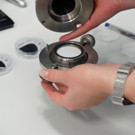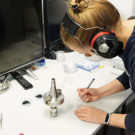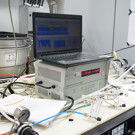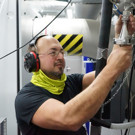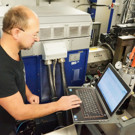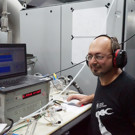Air pollution remains to be one of the top leading causes of premature death worldwide, with significant share attributed to particulate matter and reactive nitrogen compounds from mobile sources - that is cars, trucks, buses, tractors, construction equipment, ships, and various other mobile machinery. The metrics used in legislative limits, such as the total mass of particulate matter contained in a cubic meter of ambient air or emitted by a car per kilometer driven, do not always readily correlate to the adverse effects on human health. Neither do advanced chemical analyses, as the human body reaction to a complex mixture is not the sum of reactions to its individual constituents. And the relevancy is also, in many cases, questionable in animal studies. On the other hand, we just cannot, for ethical reasons, willingly expose humans to harmful doses of vehicular exhaust. Given the discrepancies between legislative metrics and health effects, and between laboratory tests and real driving, health-relevant metrics applicable to real driving conditions are sought to evaluate the effects of emerging legislation, technologies and fuels.
As a promising alternative, several groups have started exposing human cells, and later also cell cultures or sophisticated 3-D models of the lungs, to engine exhaust, industrially produced nanoparticles, fumes from coal burning boilers, and various other potentially harmful mixtures. With engine exhaust, such experiments require a close cooperation between mechanical engineers and toxicologists, and the use of advanced and unique experimental setups. Over the last decade, there have been only a few such experimental groups worldwide. One of the early groups was a joint project MEDETOX (2011-2016) of professor Michal Vojtíšek, then at the Technical University of Liberec, and Jan Topinka, D.Sc., at the Institute of Experimental Medicine of the Czech Academy of Sciences. Combining the lessons learned from this and several subsequent research projects with extensive experience with real-world emissions monitoring using portable systems mounted in the tested vehicle, prof. Vojtíšek, along with his former doctoral student ing. Vít Beránek, Ph.D., now a researcher at the Vehicle Centre of Sustainable Mobility of FME CTU in Prague, two colleagues from the Czech University of Life Sciences in Prague - ing. Martin Pechout, Ph.D., and David Macoun - and colleagues at the Institute of Experimental Medicine - Mgr. Tereza Červená, RNDr. Pavel Rössner, Ph.D., and ing. Jan Topinka, D.Sc. - have developed a highly compact exposure box for exposing sophisticated cellular models of human lung tissues, comprised of living cells cultivated in the laboratory, directly to diluted engine exhaust.
The exposure box has been designed and fabricated in-house with the vision of mobile use, minimizing size and power consumption. The exhaust is taken from the tailpipe with a heated line to prevent condensation and formation of new particles, diluted with air in a controlled manner, conditioned to 37 °C, 85-90 % relative humidity and 5 % CO2, which are close to the typical "operating conditions" of the surface of human lungs, and "delivered" to many membranes, about 6 mm in diameter, on which the cultures are grown. Engine exhaust contains a very large number of nanoparticles, mostly on the order of 10 nanometers in diameter. (A typical diameter of a human hair is 40-80 micrometers, or 40-80 thousands nanometers - if a human hair would be magnified to just fit in a subway tunnel, the nanoparticles would be about the size of poppy seeds.) Such small particles were reported, in scientific studies, to readily deposit in human lungs, and to penetrate through protective cell barriers to the blood. They are very difficult to measure, which is why the newly introduced emissions limit on the total number of particles (PN) is only concerned with particles larger than 23 nanometers.
Preliminary tests, done on a direct injection gasoline engine used in a typical car, have not only shown the viability of the approach, but also, one of the longest exposures - five days in a row - has been attempted, and so far, the results are promising. The compact design and choice of components offers a promise for implementation during common laboratory tests and also on the road, which is where it matters. "We need to know what is the effect of new motor fuels and new engine and exhaust aftertreatment technologies on human health. Ideally before their use becomes widespread. Real world testing is an essential part of the tests - if we want to improve the air in our cities, we need to assess the emissions not only during a prescribed laboratory test, but, most importantly, in normal, everyday driving. With the miniature exposure box, we are taking this one step closer to a realistic assessment.", says Michal Vojtíšek
![[design/2014/cvut-logo-en-white.png]](https://www.fs.cvut.cz/content/images/design/2014/cvut-logo-en-white.png)
![[design/2014/cvut-logo-en-print.jpg]](https://www.fs.cvut.cz/content/images/design/2014/cvut-logo-en-print.jpg)

